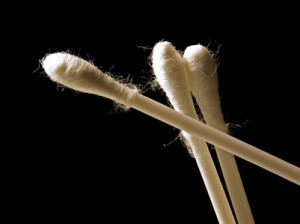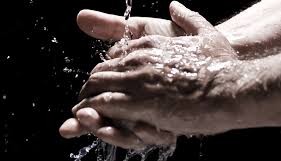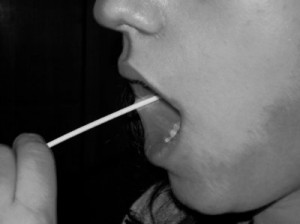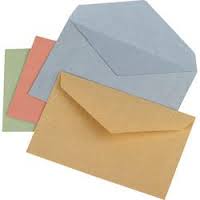Buccal DNA sample or ‘mouth swab’
The collection of cells holding DNA material is simple, quick and painless. A mouth swab, used to collect genetic material is as good as a blood test, but the advantage is that it can be done in the comfort of your home, without sting or pain. The buccal sample can be performed on adults, children and newborns. Please note that because it is you yourself whotakes the samples, the results of these tests can not be used as part of a legal process or immigration procedure.
If you do not have buccal samples available for the test participants, please see our list of other samples that can be used to extract DNA material to be tested.
The mouth swab for DNA testing requires a sterile cotton swab. The moment a lab receives your order, it sends you a sampling kit cotton swabcontaining all the necessary sterile equipment, job instructions, consent forms and a return envelope. This all is sent in one discreet envelope.
The procedure is simple and fast. However, to ensure obtaining a sufficient amount of DNA and avoid sample contamination, please follow the detailed instructions below.
Do not consume tea, coffee or tobacco during the 4 hours before sampling. These substances degrade DNA and makes it impossible to analyze. It is preferable to take the sample preferably one or two hours after the last meal. Ideally take the sample in the morning when you wake up.
Rinse your mouth thoroughly with warm water, do not use toothpaste, chewing gum or mouthwash after brushing. Let the children drink water at room temperature and use a syringe without a needle full of water to rinse the mouth of newborns.
Use capital letters on the envelopes of the sampling kit for each participant with your name and additional information (sampling date, date of birth, (alleged) relationship, reference number of the file), and don’t forget to sign the consent forms. It is very important that all documents are completely filled and readable. The laboratory will perform no test without consent in good standing of each participant and the legal representative of minor children.
Wash your hands thoroughly before before opening the envelope and putting the sample material in it.
Repeat this procedure for each individual person to be tested: Lay the marked envelope with the name of the person to be tested, a small, clean glass and a sterile package containing two saliva swabs in front of you. Open the packaging and make sure not to touch the sterile cotton at the end of the stick. Each person tested will use two sticks, one for each cheek. Take a swab ensuring that the end of the cotton swab does not come into contact with your hands or with any other object, such as the table.
Ask the participant to open his/her mouth wide and you will put the stick inside the mouth against the cheek. Firmly rub the swab along the cheek, over and under the tongue for 20-30 seconds. This friction can recover a little saliva and will detach the epithelial cells. Rotate the swab on itself while buccal dna swabyou rub to collect enough cells around the cotton swab. Place the swab immediately after collection in a clean glass and let it dry in the open air. You can also put it in properly labeled paper envelope with the name of the person being tested (insert it again in its original sterile packaging). Repeat the sampling procedure on the other cheek with the 2nd swab.
Place each DNA sample in an enveloppe, once it has dried. It is vital not to mix the samples of participants. This is why we urge you to insert each stick immediately after collection in a glass placed next to the envelope correctly labeled in the name of the person being tested. After a drying time of at least one hour in the open air, you can place the two samples from each participant in their envelopes and seal them. Never package the samples in plastic!

Return all the envelopes and filled-out consent forms to the laboratory. Remember that postage is based on weight. Please ensure envelopesthat the envelope contains all the necessary information so that the laboratory can start testing as soon as possible
